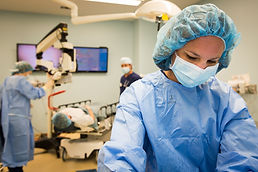
Ministry of Foreign Affairs of Japan Medical Visa Guarantee Agency No. B-66
Fukuoka Prefecture, Japan Travel service No. 35
Japanese Registration Support Organization No. 19-000303
Japan Medical Equipment Sales and Leasing
Medical Supporter
Accompanied with heart, medical care support in Japan

Lung cancer|Lung Cancer
1. Treatment method


(1) Surgery
_cc781905-5cde-319 4-bb3b-136bad5cf58d_ Partial resection, segmental resection, lobectomy, pneumonectomy (one side only) etc. In addition, thoracoscopic surgery can be performed at an early stage, and surgery cannot be performed if there is cardiopulmonary dysfunction.
_cc781905-5cde-319 4-bb3b-136bad5cf58d_ Due to the different health conditions of patients before surgery and the type of surgery, a few Patients may develop complications such as wound infection, aspiration pneumonia, pressure ulcer, upper gastrointestinal bleeding and sepsis.
(2) Radiation therapy
_cc781905-5cde-319 4-bb3b-136bad5cf58d_ "Definitive radiotherapy" for therapeutic purposes and for "Palliative radiation therapy" to relieve symptoms caused by bone and brain metastases. In the case of localized small cell lung cancer, in order to prevent metastasis to the brain, "prophylactic whole brain radiation" that irradiates the entire brain can be performed.
_cc781905-5cde-319 4-bb3b-136bad5cf58d_ When difficult to operate in stage I or II, or when When chemoradiation therapy using chemotherapy and radiation therapy is difficult in stage III, definitive radiation therapy is indicated for non-small cell lung cancer. For small cell lung cancer, the localized type requires radiation therapy.
side effect:
_cc781905-5cde-319 4-bb3b-136bad5cf58d_ Short-term reversible acute side effects such as: esophagus caused by radiation esophagitis Foreign body sensation, dysphagia and pain, dry cough caused by radiation pneumonitis, skin burning sensation, abrasions, redness, swelling and desquamation, the above acute reactions will gradually appear in the second to third weeks of treatment, and will increase with the number of treatments Gradually increase its severity until about three weeks after the treatment is completed, it will not completely fade away; chronic irreversible side effects such as: dysphagia caused by esophageal stricture, pulmonary fibrosis and temporary radiation pneumonitis, etc.
_cc781905-5cde-319 4-bb3b-136bad5cf58d_ During the second to third week of treatment, there will be There is a foreign body sensation at the beginning, and then the feeling will gradually turn into pain and difficulty swallowing. At this time, we recommend taking painkillers to relieve the symptoms to ensure that the intake of nutrition and water is not affected. If necessary, it is recommended to temporarily place a nasogastric tube .
_cc781905-5cde-319 4-bb3b-136bad5cf58d_ In addition, skin reactions caused by radiation therapy, in the fourth to the After five weeks, you will notice redness, darkening and itching of the skin. During the treatment, we will advise the patient not to rub the irradiated skin hard, nor to scratch the itching, try to avoid using medicines, lotions, etc. on the treatment area, and do not use soap and body wash when taking a bath to avoid skin friction. If there is any broken skin or ulcer during the treatment, please tell the doctor and nursing staff as soon as possible.
_cc781905-5cde-319 4-bb3b-136bad5cf58d_ Since radiation therapy includes part of the lung, it will Cause local radiation pneumonitis, in most patients, this kind of radiation pneumonia is asymptomatic or only mild dry cough, but some patients will have continuous dry cough and mild fever about one month after treatment If the above-mentioned symptoms are not caused by infection or disease progression after detailed examination, we will consider it as more serious radiation pneumonitis, and give cough medicine to relieve symptoms, and for more serious patients, we will give steroid treatment as appropriate , Symptoms will generally be completely relieved within half a year.
_cc781905-5cde-319 4-bb3b-136bad5cf58d_ During radiation therapy, the attending physician will adjust the drug or After the course of treatment and treatment, there are regular outpatient clinics for continuous health education to reduce the probability of long-term side effects or early detection of sequelae to give appropriate treatment and care.
(3) Drug treatment
_cc781905-5cde-319 4-bb3b-136bad5cf58d_ The treatment of lung small cell lung cancer is mainly chemotherapy, the first The first-line drugs are Cisplatin and Etoposide, and the two drugs are used in combination. If small cell lung cancer is confined to the chest cavity, radiation therapy is used at the same time; if it has spread, chemotherapy alone is used. After the failure of the above two drugs, the most commonly used second-line chemotherapy drug is Topotecan.
_cc781905-5cde-319 4-bb3b-136bad5cf58d_ Chemotherapy for non-small cell lung cancer is divided into two categories, one is Patients in the second or third stage need to be given adjuvant chemotherapy after surgery to reduce the chance of recurrence. At this time, the standard drug option is Cisplatin combined with Vinorelbin. Another situation is inoperable terminal patients. According to clinical studies, patients who received chemotherapy lived longer than patients who did not receive chemotherapy, and their quality of life can also be maintained in a better situation. Therefore, patients should be encouraged to receive treatment if their physical strength and nutrition permit.
_cc781905-5cde-319 4-bb3b-136bad5cf58d_ Drugs in non-small cell lung cancer over the past two decades , there has been obvious progress, usually platinum plus a new generation of chemical drugs, such as paclitaxel, vinopine, Gemcitabine or Pemetrexed, the chemotherapy of the two drugs is the current standard However, if the patient's activity or nutrition is poor, single drug therapy can also be considered.
_cc781905-5cde-319 4-bb3b-136bad5cf58d_ Targeted therapy drugs can include Aresa (Gefitinib), Erlotinib, Bevacizumab and Cetuximab, the latter two need to be combined with chemotherapy and used in combination; the first two are oral drugs and are usually used alone. Many studies have shown that for patients with mutations in epithelial growth hormone receptor (EGFR) detected by genetic testing of lung cancer, the chances of using Aretha or palliative therapy are very high, and early use can be considered.
The above are some basic principles of systemic treatment of lung cancer. For each patient's situation, a decision should be made after discussion with the treating physician.
2. Rehabilitation
(1) Daily life after surgery (surgical treatment)
_cc781905-5cde-319 4-bb3b-136bad5cf58d_ Due to decreased respiratory function, although doing light exercise or moving slightly You will have shortness of breath, your body will feel lazy, and you may not have much energy, but it is important to maintain your physical strength through light exercises such as walking without forcing it.
(2) Daily life with medication
_cc781905-5cde-319 4-bb3b-136bad5cf58d_ Some medicines can cause bone marrow suppression as a side effect. In this case, especially the function of white blood cells will be reduced, making the resistance weak and susceptible to infection. Therefore, to prevent infection, it is very important to wash your hands frequently and rinse your mouth frequently.
(3) Daily life after radiotherapy
_cc781905-5cde-319 4-bb3b-136bad5cf58d_ If a wider area of the lung is treated with radiation than before treatment , Respiratory function will be much lower than before treatment. Because at the same time, there will be slight movement or shortness of breath, the body will feel lazy, and there will be no energy. Also, things to be careful about can also be prone to pneumonia.
For lung cancer-related drug information, please refer to the Medical Assistant Blog
https://www.medicalsupporter.org/medicalblog/tag/lung cancer